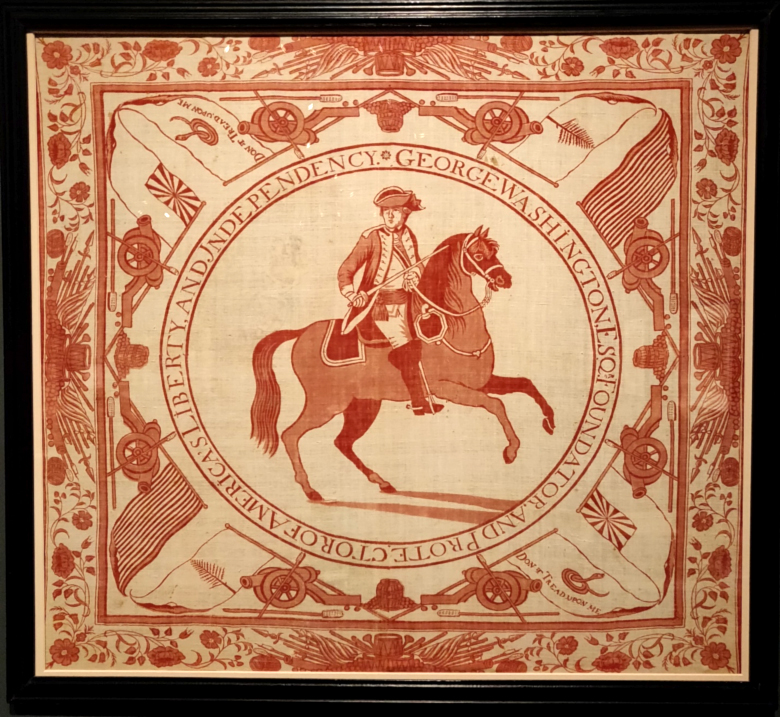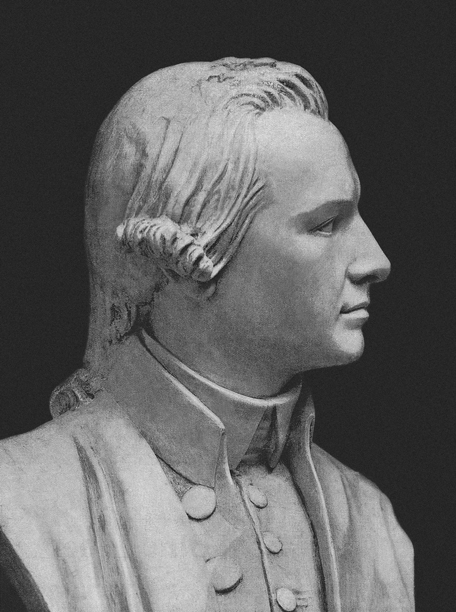Most famous weapon? What was the most popular, deadliest, strangest or most intimidating weapon of the Revolution? Why?
There are many candidates, but my own favorite is Francis Marion’s use of a siege tower to force the surrender of Fort Watson in South Carolina in April 1781. Unable to assault the fort by conventional means, Major Hezikiah Maham showed his understanding of classical warfare techniques by recommending the use of a siege tower. Logs for a 30-foot-tall structure were cut and prepared at a distance, ready to move and assemble quickly. During the night of April 22-23 the pieces were moved within range of the fort and assembled; when dawn broke on the 23rd, American sharpshooters atop the tower had an easy time sniping at British defenders on the fort walls. This made the fort indefensible, and it fell to the Americans before the day was out.
It was a towering success.
–Don N. Hagist
The Ferguson repeating rifle. It was a weapon that could have won the war for the British, but their bureaucracy was too hidebound to perceive this. Major Patrick Ferguson managed to persuade the royal ordinance works to produce 100 copies of the gun, which was a breech loader and could fire seven times without reloading. Modern replicas have fired sixty times without jamming. It was deadly at 200-300 yards, far better than an ordinary musket. General Sir William Howe gave Ferguson command of a unit composed of men drawn from light infantry companies. It was used to good effect at the battle of Brandywine. But it was difficult to produce and broke down during combat if the breech was not frequently lubricated. Howe disbanded the Ferguson unit and stored the guns in New York. Ferguson was killed at the Battle of Kings Mountain and the gun was forgotten.
–Thomas Fleming
In the early part of the Revolutionary War, almost no weapon struck fear into American soldiers’ hearts than the British bayonet. To be standing with a fellow militiaman and citizen soldier, and watching the precisely-marching solid line of red coats coming toward you in lockstep to a drum beat was unnerving enough. But mounted to the front of each British musket was a very long, triangular knife gleaming in the sunshine. Americans weren’t as familiar with bayonet use as their British opponents and most American flintlock muskets didn’t have them.
The bayonet fear was lessened significantly when bayonets were supplied by France and by the training of the Continental Army at Valley Forge by the Prussian Maj. Gen. Baron von Steuben.
The Americans’ bayonet expertise exemplified itself the night that Lt. Col. Alexander Hamilton led a bayonet-only assault on redoubt 10 during the last days of the Yorktown siege.
–John L. Smith, Jr.
According to Dr. Benjamin Rush, the most powerful weapon was the newspaper. He wrote to Gen. Nathanael Greene on September 4, 1781 that a newspaper “in the present state of affairs would be equal to at least two regiments.”
–Todd Andrlik
The Revolutionary War was the first time any military deployed a submarine. David Bushnell’s Turtle wasn’t a great success, but it was strange and intimidating.
–J.L. Bell
I’ll have to go with David Bushnell’s precursor effort leading to the modern day submarine, the 1777 Turtle, together with his work with marine mines. These were highly creative, ahead-of-their-time efforts akin to today’s science fiction genre. For further information, see Christian McBurney’s article on the subject.
–Gary Shattuck
If the pen is mightier than the sword, my vote for the best weapon goes to the pen of Thomas Paine. His arguments and magnificent prose in Common Sense and The American Crisis were powerful weapons against Great Britain. Americans were inspired by what Paine wrote, and in that sense his pen was a more profound weapon than any musket, Pennsylvania rifle, or piece of field artillery. Common Sense was not only a persuasive argument on behalf of declaring independence, but it led many to believe that the American Revolution could be the “birthday of a new world,” a republican world in which there were no monarchs. The American Crisis helped sustain morale during a long, difficult war.
-John Ferling
I love Quaker cannons! They were just logs, sometime painted black, propped up to look like cannons. Perhaps the best known example of their use was at Rugeley’s Mill in South Carolina when, on December 4, 1780, the Americans soldiers constructed a phony cannon from a log. William Washington aimed the wooden “cannon” toward the buildings and threatened to open fire. Approximately one hundred Loyalists surrendered without a single shot having been fired.
–Kim Burdick
I’ll opt for strangest, and not a weapon but a defensive item. In the latter stages of the war in the South, American cavalry held a devastating advantage over their British and Loyalist opponents. Major James Moncrief, an engineer officer then in Charleston, claimed that he had invented a portable defensive fortification that could be easily transported and quickly set up to protect British infantry detachments from the rebel cavalry. Unfortunately, the letter in which he proposed employing this device gave no description of it, but it sounds ingenious and Moncrief was certainly a skilled officer and engineer. His superiors apparently ignored the suggestion, but it sounds unique and certainly strange.
–Jim Piecuch
As a former infantryman, I believe the bayonet was the most effective weapon of the war. The British used the mass assault with bayonet as a standard tactic, and when facing a force without unit discipline and effective leadership it proved highly successful. Most of the militia units called up to reinforce Continental Army units were not equipped with bayonets, yet were often called upon to face “cold steel” charges. They seldom did. When American “light troops” were properly armed with bayonets later in the war, their bayonet attacks led to an increased respect by British officers for their prowess. I wonder if more Americans were killed and wounded by bayonets than from muskets?
–Ken Daigler
The sight of an advancing line of bayonets produced a gripping “shock and awe” in even the most battle hardened Revolutionary warriors. Highly effective in close quarter combat, the bayonet was feared by soldiers on both sides. Dull and abrasive, Revolutionary war bayonets produced deadly wounds. With experienced hands, bayonet thrusts left ragged, three sided wounds that were difficult to heal. Many soldiers with bayonet injuries simply bled to death.
Demonstrating their combat power, bayonets were the principal weapons at several battles including he British storming of Gen. Anthony Wayne’s camp at Paoli, Pennsylvania and Wayne’s assault on the British fort at Stony Point, New York. Their lethal powers were so potent that the world’s militaries discontinued the use of the rough, three-sided bayonet in a humane gesture.
–Gene Procknow
In terms of accuracy, the long rifle carried by some Virginia and Pennsylvania backcountry patriots. Think of Timothy Murphy who allegedly fired his long rifle from about 300 yards and mortally wounded British general Simon Fraser at Saratoga on October 7, 1777. Taking out Fraser that afternoon began the disruption of the British reconnaissance action, which culminated in total victory for the Americans. Other weapons mattered a lot, but the long rifle had the capacity to affect and shape the course of combat, even if unwieldy and difficult to reload, making it a weapon of terror when used by Murphy and others.
–James Kirby Martin
I don’t really know about strange or popular weapons but the deadliest and most intimidating weapon of the war was a British regular and his bayonet. It took years of experience and proper training before the Patriot forces found the fortitude to face up to the glimmer of cold steel coming down at them in the hands of trained redcoats.
–Wayne Lynch









11 Comments
I’d never heard of Moncrief’s portable anti-calvary design before. It’s fun to think about what that might have been, and makes me wonder if maybe they were large, light-weight, wooden caltrops or Czech hedgehogs.
I’ve not yet seen documentation that use of the three sided bayonet was discontinued as a humane gesture.
What about the tomahawk – which was part of the equipment of backcountry units – from those arriving in Cambridge in July ’75 to Morgan’s [and recommended by Washington – with attendant ‘war whoops’ – to strike fear into British Regulars when attacking. ] ? See Sullivan’s up-state NY campaign or Clark’s exploit. A’local’response to the European bayonet….
I agree with the comments on the bayonet. I recall the reason the British did not charge across the North Bridge in Concord was because Col. Issac Davis of Acton, a blacksmith, had forged bayonets for the Acton Minutemen and was telling.
“watching the precisely-marching solid line of red coats coming toward you in lockstep to a drum beat was unnerving… ”
– how often did that occur?
Both sides fought most of the major battles in the traditional manner with the bulk of the armies in line. They might have been in some form of open order with a couple feet between files but they still maintained a line. That’s how you controlled your field of fire and the ground in front of you. Having hundreds of guys running all over the place and firing indiscriminately with single-shot firelocks generally is not terribly effective.
I’ve been active in Rev War reenacting for over forty years but I still remember the first time I took the field in a mock battle. I can still picture a tree line over 200 yards away and seeing glints of sun on steel between the trees. I also still remember the feeling I had when the line of regulars in red and unripe Loyalists in green came out of that tree line. At that moment I understood why men ran. Quite the learning experience.
As an aside, it’s a myth that the soldiers kept their bayonets “dull and abrasive” as mentioned above. Rather, they kept them clean and sharp. They had to be that way for show (remember, period warfare is as much a mind-game as slaughter); to penetrate the layers of clothing, equipment, and skin; and then to withdraw from the wound with minimal resistance (the reason for blood grooves along the sides of the bayonet). The myth may originate from the condition of some bayonets around today that have seen over two centuries of rough use and storage.
Blood grooves…
There is no such thing. Not in swords, not in bayonets. They are simply means of reducing the amount of material in the blade while increasing strength.
Timothy Murphy’s unique rifle was and is a lethal weapon. It is probably still on display at the Old Stone Fort Museum in Schoharie, New York. But it was almost certainly not the weapon that mortally wounded Simon Fraser. See Hugh Harrington’s article in this journal, “The Other Mystery Shot of the American Revolution: Did Timothy Murphy Kill British Brigadier General Simon Fraser at Saratoga?” This was published in 2010 (Vol. 74). A more likely candidate is credited in my forthcoming book, 1777: Tipping Point at Saratoga, due out this fall.
My apologies for conflating two references to articles by Hugh Harrington. That which was published in the Journal of the American Revolution dates to the March 25, 2013 issue. The 2010 article (with Jim Jordan) appeared in The Journal of Military History.
The Ferguson was not a repeater; it was a single shot breechloader. It could be reloaded by simply turning the trigger guard which unscrewed a “quick thread” breech plug exposing the breech. It was then loaded with powder and shot, primed, and closed. It was one of the first successful breechloading flintlocks. It was doomed. though, by being expensive, difficult to manufacture, and difficult to maintain. It also became difficult to operate due to powder fouling.
Does anyone know of the use of metal knuckles in the Revolutionary War?